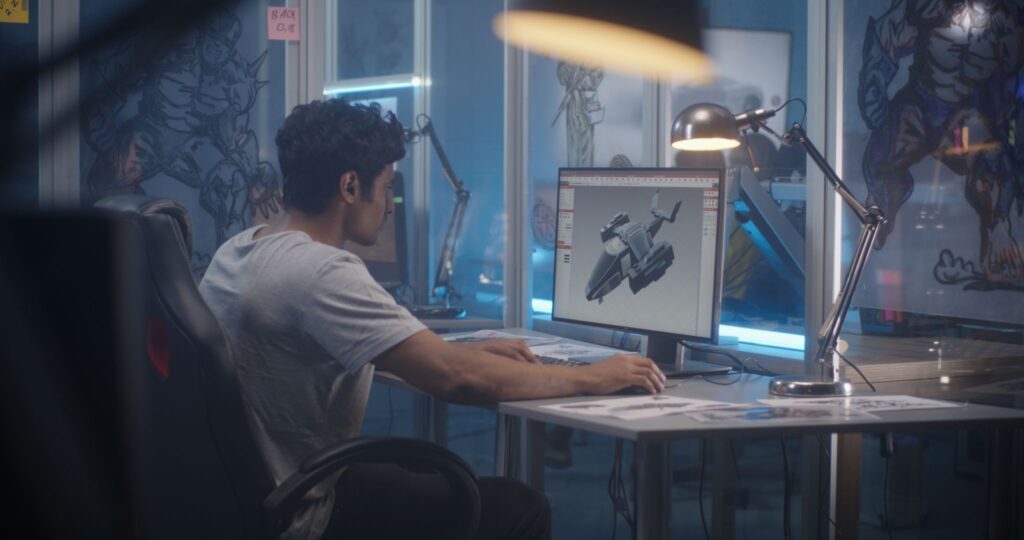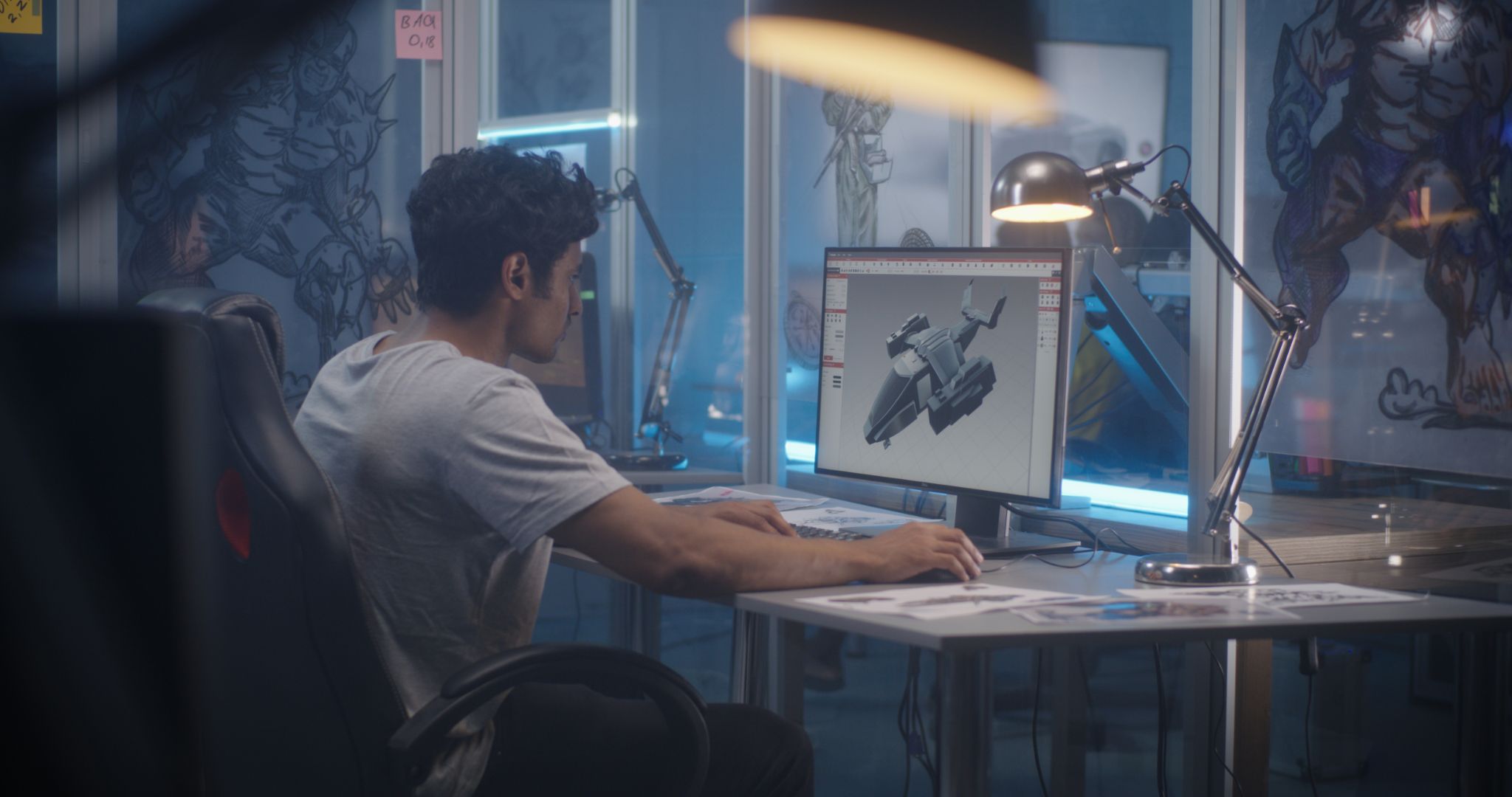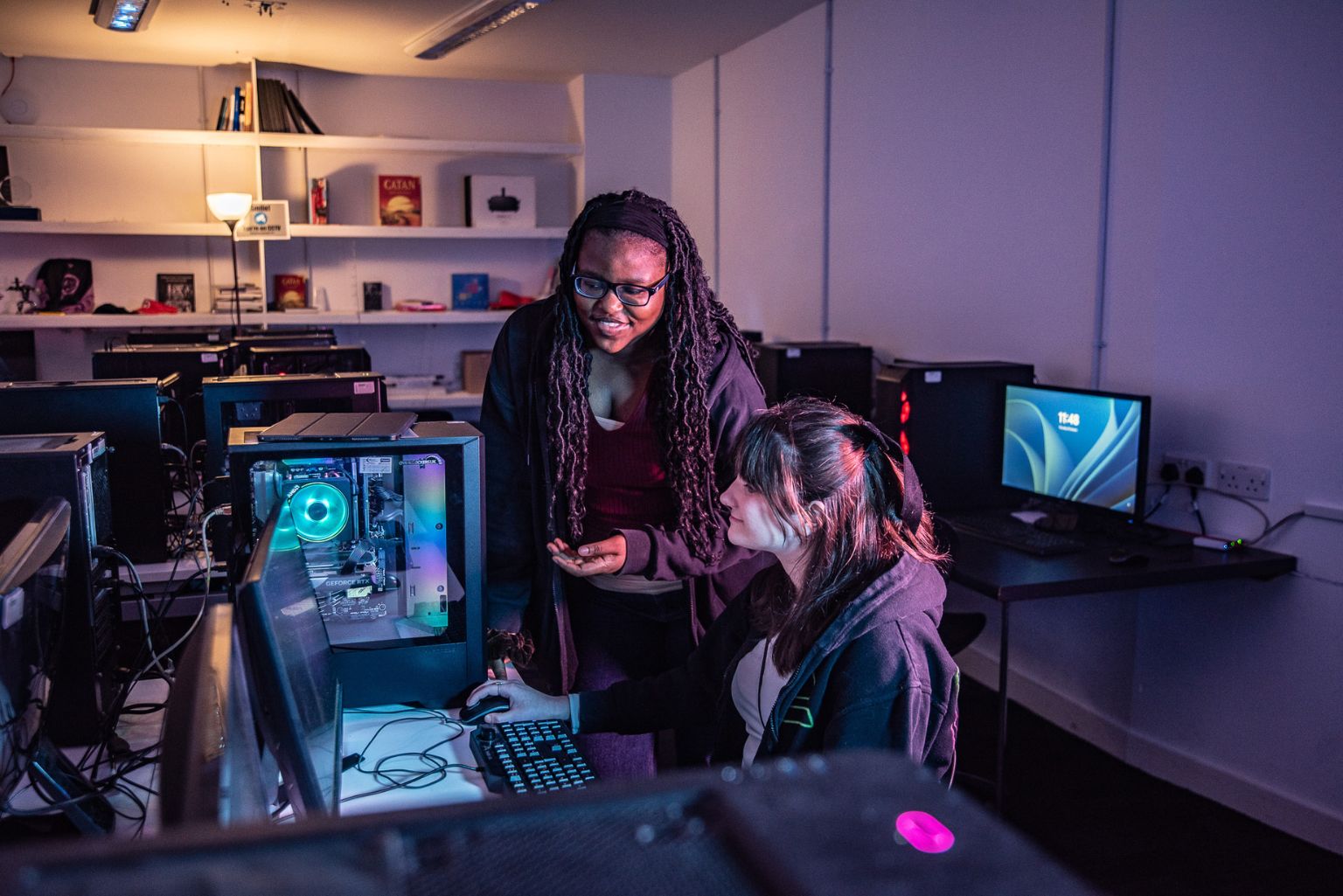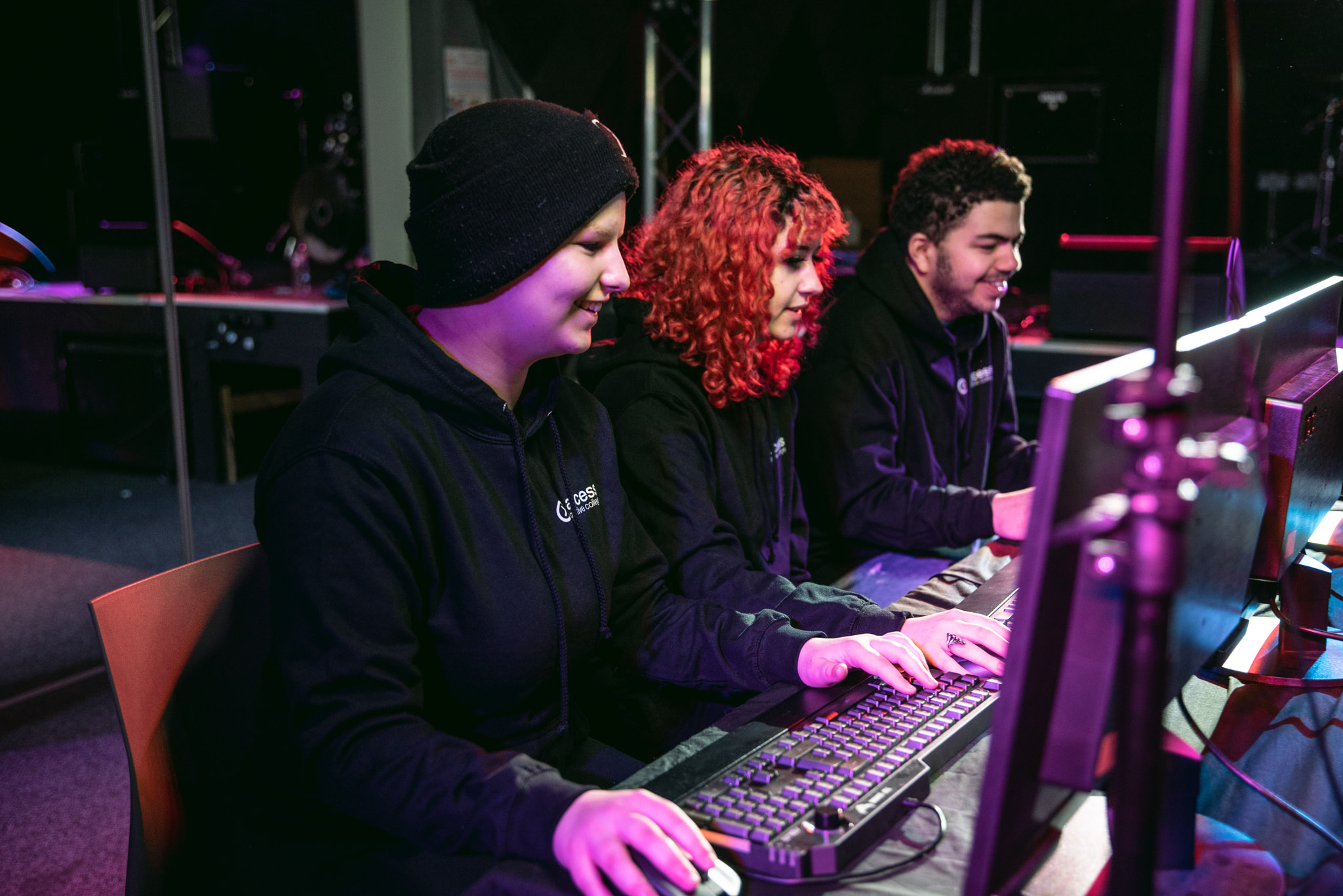In the competitive world of game design, having a compelling portfolio is essential. It’s your professional showcase, demonstrating your skills, creativity, and experience to potential employers or clients.
Whether you are an aspiring developer, a creative professional, or an ambitious school leaver, crafting a game design portfolio can significantly enhance your job prospects.
Why a portfolio matters in game design
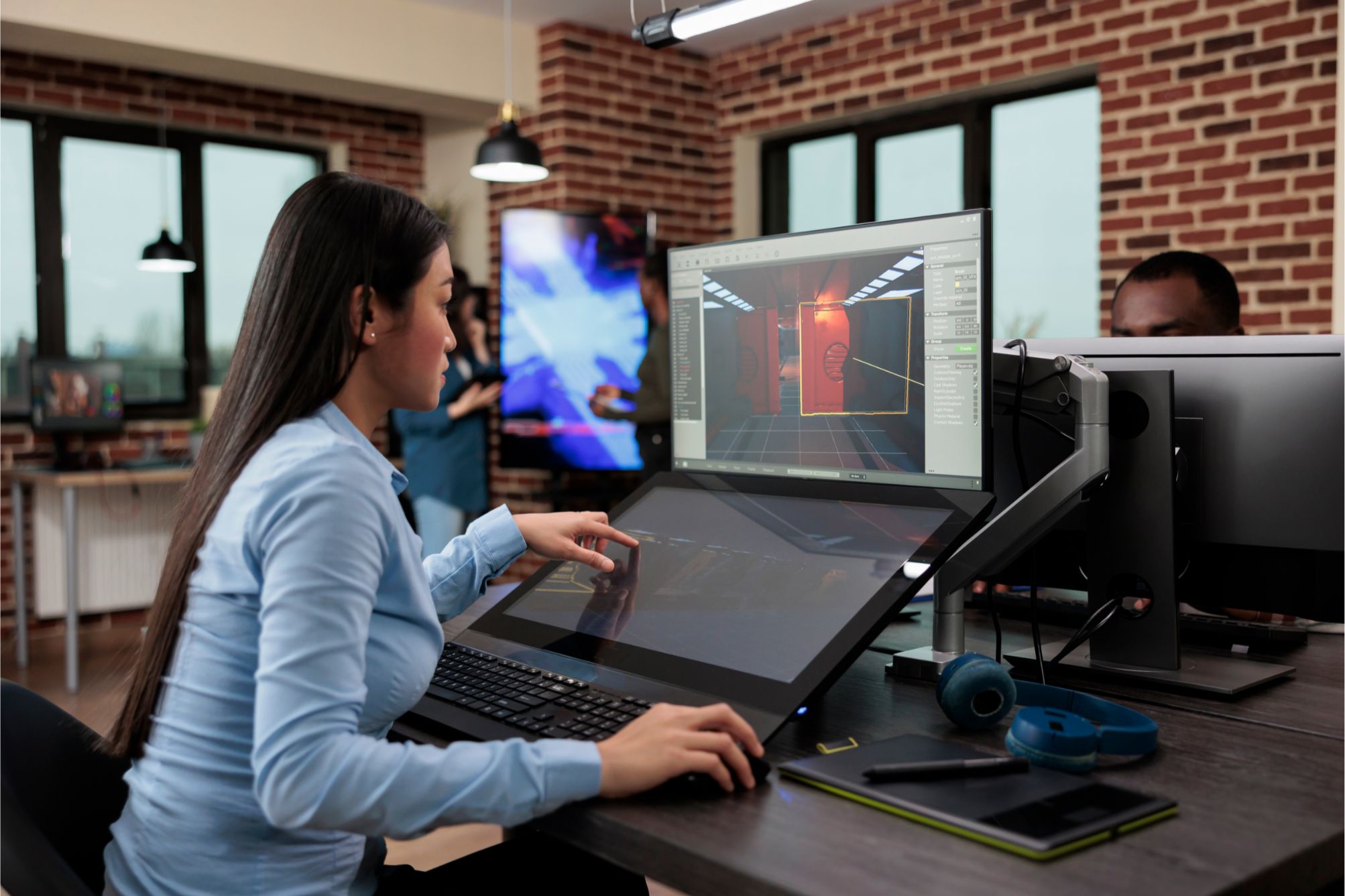
A well-crafted portfolio is more than just a collection of your work, it’s a visual showcase that makes or breaks a job application. Your portfolio provides a window into your abilities and experiences, allowing employers to see the quality and range of your work.
Here are 6 key reasons why having a well-crafted game design portfolio is crucial:
1) Showcases your skillset and creativity
By including various projects, you can highlight your talents in areas such as level design, character design, and gameplay mechanics.
2) Demonstrates real-world experience
Employers look for candidates who have practical experience. A well-documented portfolio shows you have not only theoretical knowledge, but hands-on experience in game design.
3) Highlights problem-solving abilities
Game design often involves overcoming complex challenges. By showcasing projects that detail your problem-solving process, you can illustrate your ability to handle real-world issues. This is important in a field where collaboration, innovation and adaptability are highly valued.
4) Provides insight into your design process
Employers want to understand how you think and approach design problems. Including detailed descriptions of your projects gives them insight into your design approach and methodology.
5) Sets you apart from the competition
The game design industry is highly competitive. A strong portfolio helps you stand out by providing a first-hand look at your unique style. It effectively differentiates you from other candidates who may have similar educational backgrounds but lack a compelling showcase of their work.
6) Builds professional credibility
Including testimonials and references in your portfolio can add significant credibility. Positive feedback from previous colleagues, collaborators or supervisors reinforces your reputation and reliability, making you a more attractive candidate.
Types of projects to include in your portfolio
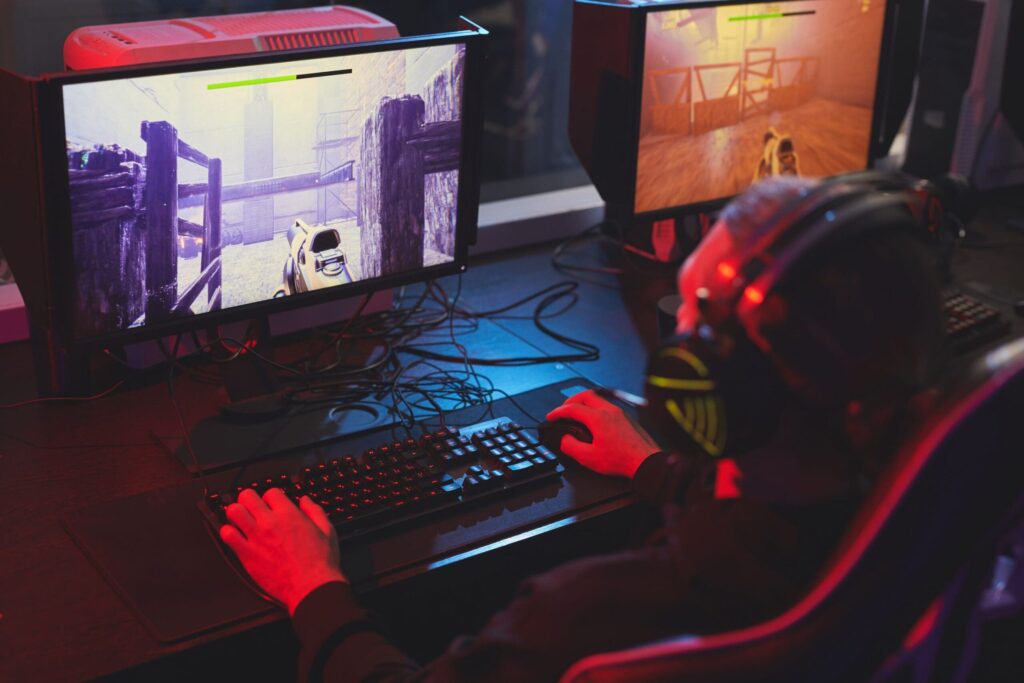
When selecting projects for your portfolio, aim for a diverse mix that showcases your technical, creative, and problem-solving skills. These include:
- Completed Games: Full games that you have developed or contributed to, showcasing your ability to see a project through from start to finish.
- Game Prototypes: Early-stage projects that demonstrate your creativity and innovative thinking.
- Technical Demos: Projects that highlight your understanding of specific tools, engines, or programming languages.
- Collaborative Projects: Team-based work that shows your ability to work effectively with others.
Presentation and organisation

The presentation and look of your portfolio is just as important as the content. A well-organised portfolio should be easy to navigate and visually appealing. Here are some best practices:
- Layout: Use a clean, professional layout with intuitive navigation.
- Visual Appeal: Incorporate high-quality images, videos, and interactive elements to engage viewers.
- Descriptions: Provide clear, concise descriptions for each project, detailing your role, the tools used, and any challenges you overcame.
What makes a game design portfolio stand out?

A standout game design portfolio is one that effectively communicates your skills and passions. Here are some key elements to think about:
- Originality: Unique projects that showcase your distinct style and creativity.
- Detail: In-depth case studies that provide insight into your design process and problem-solving abilities.
- Professionalism: A polished, error-free presentation that reflects your attention to detail.
A strong game design portfolio example

One standout example of a game design portfolio is the one by David Shaver, a Senior World Builder at Blizzard Entertainment. He was previously with Naughty Dog, Respawn Entertainment, and Schell Games.
Key features of David Shaver’s portfolio
- Clear Navigation: The portfolio is user-friendly with intuitive navigation, making it easy for visitors to find information about his projects, experience, and skills.
- Highlighted Projects: It includes 1-3 well-documented projects that demonstrate significant contributions to game design. Each project showcases the initial concept, design challenges, and final outcome, providing a comprehensive view of his skillset.
- Team Collaboration: At least one project example highlights his ability to work as part of a team, detailing his role and contributions.
- Visual and written information: For each showcased project, there are visual aids like screenshots and videos, alongside written descriptions. This combination helps illustrate the game’s development process and the final product. This is a visual medium, so use it.
- CV and Contact Information: Easily accessible CV and contact details, ensuring that potential employers or collaborators can quickly reach out.
- Personal Branding: A consistent and professional personal branding throughout the site. This includes a simple yet effective colour scheme, typography, and layout that reflect his professional persona.
- Links to relevant social media accounts: The inclusion of his social media handles means that he is giving the reader the chance to learn more about him via other visual platforms.
Why this works
David Shaver’s portfolio works because it strikes a balance between showing off technical skills and providing insight into his creative process. The clear, concise descriptions backed by visual evidence make a compelling case for his expertise in game design.
For aspiring game designers, modelling a portfolio after David Shaver’s could enhance your chance of impressing potential employers and collaborators. Emphasising well-documented projects, clear navigation and professional branding are key steps towards creating an impressive and effective portfolio.
Platforms for showcasing

Choosing the right platform to showcase your portfolio is crucial. Here are some options:
- Traditional Portfolio Websites: Platforms like Wix, Squarespace, and WordPress offer customisable templates for creating professional portfolios.
- Social Media: Platforms like LinkedIn, Instagram, and Behance are great for reaching a wider audience and networking with industry professionals. To a great degree, these platforms are visual-based and you can use the tools they have (such as carousels) to showcase your work.
- Alternative Platforms: Sites like ArtStation and itch.io cater specifically to game designers and developers.
Final tips
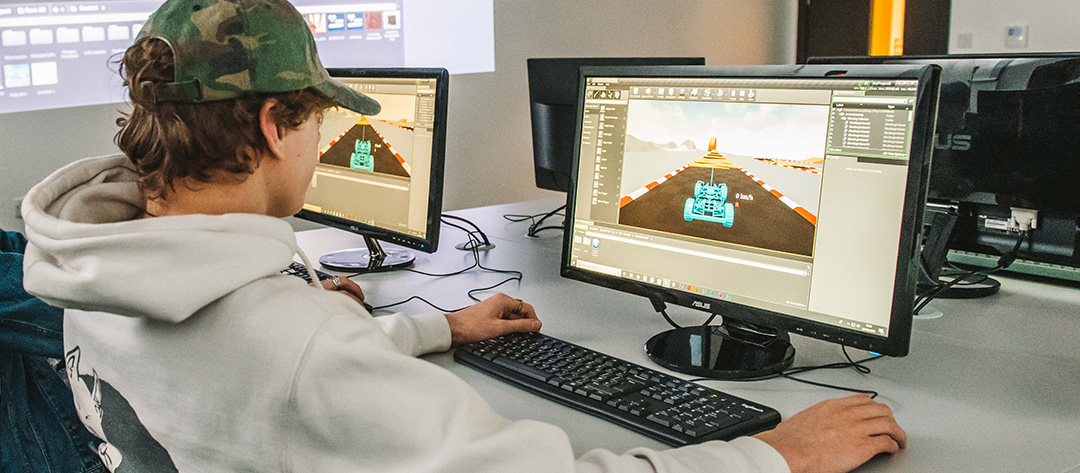
- Keep It Current: Regularly update your portfolio with new projects and remove outdated work. It should be a live document that evolves along with you.
- Network: Attend industry events, join online forums, and connect with other professionals to get your portfolio seen by the right people.
- Stay Positive: Building a great portfolio takes time and effort. Stay motivated and keep working on improving your skills.
Creating an amazing game design portfolio is a critical step when advancing your career. By showcasing a diverse range of projects, maintaining a professional presentation, and continuously seeking feedback, you can make a lasting impression on potential employers.
Start working on your portfolio today and share it with peers for feedback. For further resources or to get started, learn more about our game design courses here at Access Creative College, and take the first step towards a successful game design career.


